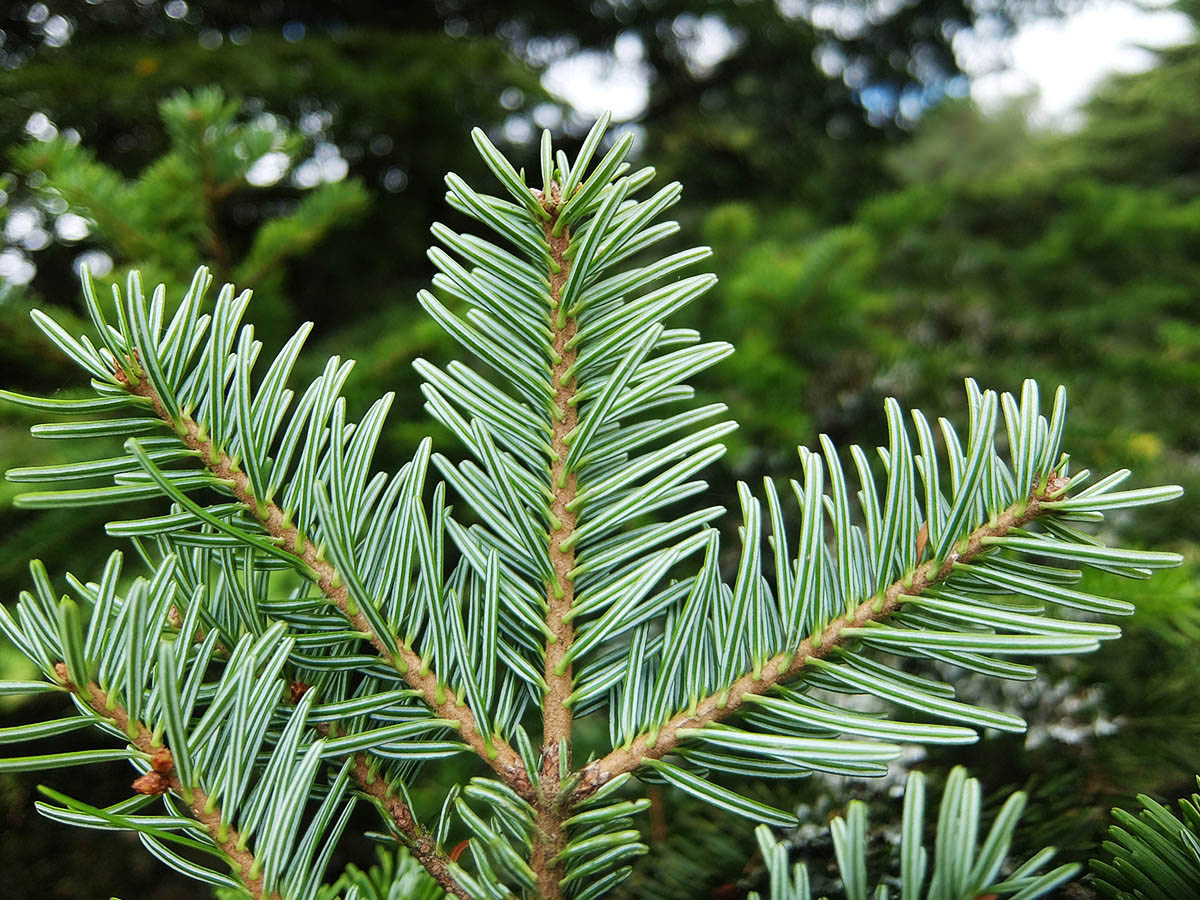European silver fir (ESF)
European silver fir is a long-lived conifer and the largest tree (up to 60 m) of the native Abies in Europe. It is not native to Britain but was an early introduction in 1603. Although widely planted as a specimen tree it has only been used on a small scale as a forestry species. Poor uptake was because early trials indicated susceptibility to silver fir wooly aphid; however, a recent reassessment of the species indicated it can be a productive species in Britain. There is growing recognition it has a place in forest diversification and is consequently being more widely used.
European silver fir is categorised as a Secondary tree species. These are a group that have demonstrated positive silvicultural characteristics in trial plots but gaps in knowledge constrain wider use. The species are being actively evaluated to increase understanding and inform future deployment.




Range
Distribution is mainly limited to the mountainous regions of eastern, western, southern and central Europe. Evidence suggests isolated relict populations as ice-age refugia in northern, central and southern Italy to Calabria, the Balkans, the Pyrenees and potentially France.
Provenance Choice
Provenances from Calabria in southern Italy out-performed other provenances in UK trials and should be the first choice for planting throughout Britain. However, other provenances from across the rest of the natural range of European silver fir also performed well.
Site Requirements
Cold hardy throughout Britain but vulnerable to frost unless planted under shelter. Sensitive to exposure and is not drought tolerant. Grows well with an annual rainfall from 700 mm but will be most productive where rainfall is >1000 mm evenly distributed across the year.
Suited to soils of poor to medium nutrient status with fresh to moist soil moisture. Can grow on deep soils over limestone and other calcareous substrates. Does not tolerate very poor soils or heather competition and should not be planted on peats or very dry soils.
Further detail on the site requirements of European silver fir in current and future climates can be examined using the Forest Research Ecological Site Classification Decision Support System (ESC).
ECOLOGICAL SITE CLASSIFICATION TOOL
Silviculture
European silver fir growth starts slowly, and trees can take 8-10 years to establish. Subsequent growth can be rapid and make it a high-volume producer with a yield class range from 10 to 22 depending on site.
European silver fir is not suited to planting on open or exposed sites and can be severely damaged by cold and wind. A deep tap root system does make it relatively wind firm when compared with other species like Norway spruce. As a shade-tolerant species sensitive to exposure European silver fir is best suited to planting in sheltered sites as group planting or underplanting.
Under the right conditions European silver fir can produce good quality seed and regenerate well. Shade tolerance can enable natural regeneration to act as a ‘seedling bank’ under the canopy suiting it to continuous cover forestry. Understorey vegetation can be a hindrance to natural regeneration. European silver fir is highly palatable to deer and other browsing mammals.
Pests and Pathogens
European silver fir can be infected by a wide variety of rust fungi in its native range, although few of them are of any practical importance. It is susceptible to Heterobasidion annosum (conifer root and butt rot), although it is likely to be most damaged by H. abietinum (the fir form of the pathogen) which is rare in Britain.
European silver fir may also suffer from aphid infestations such as silver fir woolly aphid (Dreyfusia nordmannianae) which causes shoot distortion, and balsam woolly adelgid (Adelges piceae), which can cause dieback with severe infestations.
European silver fir is also affected by Neonectria canker of fir (Neonectria neomacrospora) but to what extent and the likely impact is still unclear. Neonectria is not a notifiable disease but it is of interest and any suspected cases can be reported via TreeAlert.
See our other tools and resources
Further Resources
External
In addition to the general sources of information for species the following are useful for European silver fir.
Kerr, G. (1999) European silver fir (Abies alba L.) in Britain: time for a reassessment? Quarterly Journal of Forestry, 93(4):294-298
Kerr, G., Stokes, V., Peace, A. and Jinks, J. (2015) Effects of provenance on survival, growth and stem form of European silver fir (Abies alba Mill.) in Britain. European Journal of Forest Research. DOI: 10.1007/s10342-014-0856-9.



